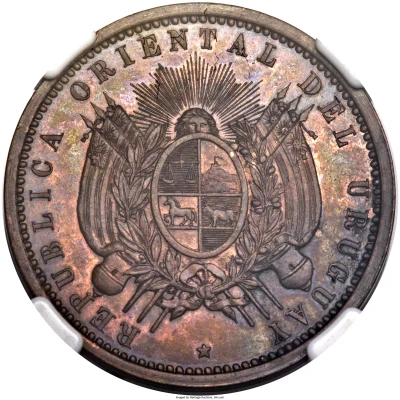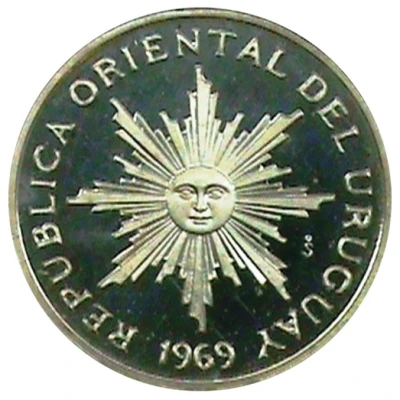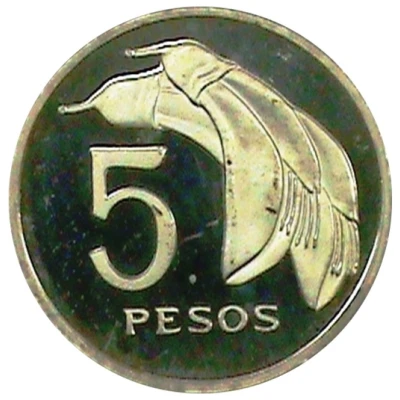


© Heritage Auctions
1 Doblon 10 Pesos - Pattern
1870 year| Gold plated bronze | - | - |
| Issuer | Uruguay |
|---|---|
| Period | Oriental Republic of Uruguay (1825-date) |
| Type | Pattern |
| Year | 1870 |
| Value | 1 Doblon (10 UYP) |
| Currency | Peso (1863-1975) |
| Composition | Gold plated bronze |
| Shape | Round |
| Technique | Milled |
| Demonetized | 1870 |
| Updated | 2024-10-09 |
| Numista | N#118680 |
|---|---|
| Rarity index | 97% |
Reverse
Value within wreath, date below
Script: Latin
Lettering: LIBRE Y CONSTITUIDA 1 DOBLON 1870
Comment
Republic bronze Pattern 1 Doblon 1870. Rare copper pattern struck for the Doblon, a gold denomination which was never struck for circulation. One of the classic rarities of the Uruguayan series, of which only few examples are known, including two gilt bronze or copper examples. A specimen of the latter was referenced by Ricardo Elicabe in the January 1929 issue of the Revista filatelica de la sociedad de comerciantes de sellos postales, printed in Buenos Aires. The law of June 23, 1862 established the gold Doblon, of .917 fineness and a weight of 16.97 grams as the monetary unit, equivalent to 10 silver Pesos of 0.917 fineness and 25.480 grams. The silver Peso was mirrored to the Brazilian 2000 Reis piece struck from 1851 onwards (these pieces were well accepted in Uruguay), but the gold was valued higher in Uruguay then Brazil: hence, the corresponding 20,000 Reis piece was worth slightly more than 10 Uruguay Pesos, namely 10.56 Pesos. Coins struck to the decimal French standard, were of slightly less nominal value when converted to the Uruguayan rate: thus a decimal gold 10 Pesos piece (such as the French 50 Francs or the Chilean condor) was worth 9 Uruguayan Pesos, while a silver decimal Peso was worth 90 Uruguayan Centesimos. These rather confusing conversions had to be made in everyday transactions since Uruguay struck no gold or silver coins for the first 15 years after the 1862 law was proclaimed. Evidently, the aforementioned gold and silver foreign coins provided a sufficient media for the higher transactions since in that 1862-1877 period, the only coins minted in Uruguay were the bronze minors struck in 1869, struck in Paris and Birmingham ("A" and "H" mintmarks respectively). shortly after those issues, a few trials of the silver and gold denominations were struck, all dated 1870, but no such regular coins were issued. all these 1870 pieces look French in manufacture and they were most probably struck at the Paris mint. Finally, on December 30, 1876 a resolution was passed to call for proposals to strike up to 1,000,000 pesos in the decimal standard. These correspond to the 1877-1878 issued struck in Paris.Although the 1862 law was never materialized into regular issue coins (save for the common 1869 bronze issues), it left a treasure for the numismatic community with the patterns dated 1870. Of the aforementioned copper trials of the Doblon,
Interesting fact
The Pattern 1 Doblon (10 Pesos - Pattern) 1870 from Uruguay made of Gold plated bronze is a rare and unique coin, with only 20 examples known to exist. It was minted in 1870 as a trial strike, and it features a design that was never adopted for regular circulation. The coin's rarity and historical significance make it highly sought after by collectors, and it is considered a prized addition to any numismatic collection.



